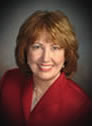The Right Equation for Math Teaching
The Common Core State Standards for Mathematical Practice require a new method of teaching. Know what to look for in your classrooms.
By Deborah Schifter and Burt Granofsky
Principal, November/December 2012
Web Resources
A Vertical Approach to Math Instruction
Establishing vertical mathematics teams creates professional development opportunities for teachers while also improving student achievement.
By Linda Gojak
Principal, November/December 2012
Web Resources
Spotlight on a STEM School
By Meredith Barnett
Principal, November/December 2012
First-graders at the Richfield STEM School are responsible for the same subjects as their peers at other Minnesota schools. But one thing’s different—they’re also in charge of worms and soil.
Postscript: Art puts the STEAM in STEM
 By Gail Connelly
By Gail Connelly
Principal, November/December 2012
Navigating Your Way Through the Research Jungle
Turn research into practice by discovering the most relevant sources to help improve your school.
By Scott Bauer and David Brazer
Principal, November/December 2012
Web Resources
From the Editor: Setting a Foundation for STEM
The problem is clear: The U.S. is losing ground in the battle to improve students’ content knowledge in science, technology, engineering, and mathematics, and business leaders lament graduates’ lack of preparation to compete in a global economy. Despite a continued sense of urgency to better prepare students, much of the discourse on improving STEM education has focused on the latter end of a student’s academic career, overlooking the opportunity to set an early foundation.
Parents & Schools: Assessing Assessments
In order to help improve teaching and learning, parents and teachers want timely assessments that monitor individual student performance and progress across a range of subjects and skills, according to a survey commissioned by the Northwest Evaluation Association (NWEA). The study, For Every Child, Multiple Measures: What Parents and Educators Want From K-12 Assessments, gauges the perceptions of parents, teachers, and district administrators—those with the most practical and personal experience with the day-to-day impact of assessments and accountability.
Ten to Teen: Spirit Makes a Difference
by Linda Bleile
Principal, May/June 2012
Spirit is a key ingredient at Wiscasset Middle School. Recognitions and celebrations, both small and large, are important features in fostering a positive climate in a middle school.
The Reflective Principal: Adding a Dimension of Enlightened Leadership
by Kathleen Lambe
Principal, May/June 2012
Schools face challenges that require leaders who are wise in the ways of people, schools, and the universe at large. The constant pressure of high-stakes testing along with the responsibilities of educating students from inadequate social, emotional, and physical environments make the leadership role more challenging than ever.
Raising the Bar: REACH for Best Practice Instruction
by Deborah K. Bryson
Principal, May/June 2012
Practitioner's Corner: Five R's for Success
by Gabriel Flores
Principal, May/June 2012
After my elementary school’s principal retired, a new leader arrived invigorated, motivated, and authoritative. He expected staff and teachers to achieve goals and complete tasks efficiently and with no delays. Within a year, teachers began to stand up to the principal and voice their dissatisfaction. Others simply ignored his requests or directives. As morale deteriorated, students saw and felt their teachers’ unhappiness.
From the Editors: Broad and Deep
Helen Keller once said, “Knowledge is happiness, because to have knowledge—broad, deep knowledge—is to know true ends from false, and lofty things from low.” Critics claim that the knowledge base about assessment systems is too shallow, asserting that evaluation and measurement tools merely skim the surface of what a student knows, how a teacher engages learning, or to what degree principals lead learning communities.
Raising the Bar: Transparency Drives Accountability
by Melissa Glee-Woodard
Principal, November/December 2010
Four years ago I began my journey as the principal of Lewisdale Elementary School, which is located two miles from Washington, D.C., in Prince George’s County, Maryland. Lewisdale is a Title I school where 80 percent of the students are Hispanic and 84 percent of the students receive free or reduced-price lunch.
Web Resources
Mentor Connections by Kathleen Sciarappa
- NAESP’s Principals Help Line is a member benefit where you may ask questions to on-call mentors who will review your question and send you a reply within 24 hours.
- Making the Case for Principal Mentoring is a guide designed for school districts and other educational groups that are designing and refining their own mentoring programs.
Make Friends With the Clock
 Ensure that the clock doesn’t become your enemy by following these strategies for time management.
Ensure that the clock doesn’t become your enemy by following these strategies for time management.
by David Coley and Chris Hitch
Principal, September/October 2010
Web Resources
Strapped for Cash
 by Charles R. Waggoner
by Charles R. Waggoner
Principal, September/October 2010
“There is no money!” This can be a morale and idea killer for a public school building staff if there ever was one. As school boards issue pink slips to teachers and staff across the nation, the morale of districts, individual schools, and communities plummets.
